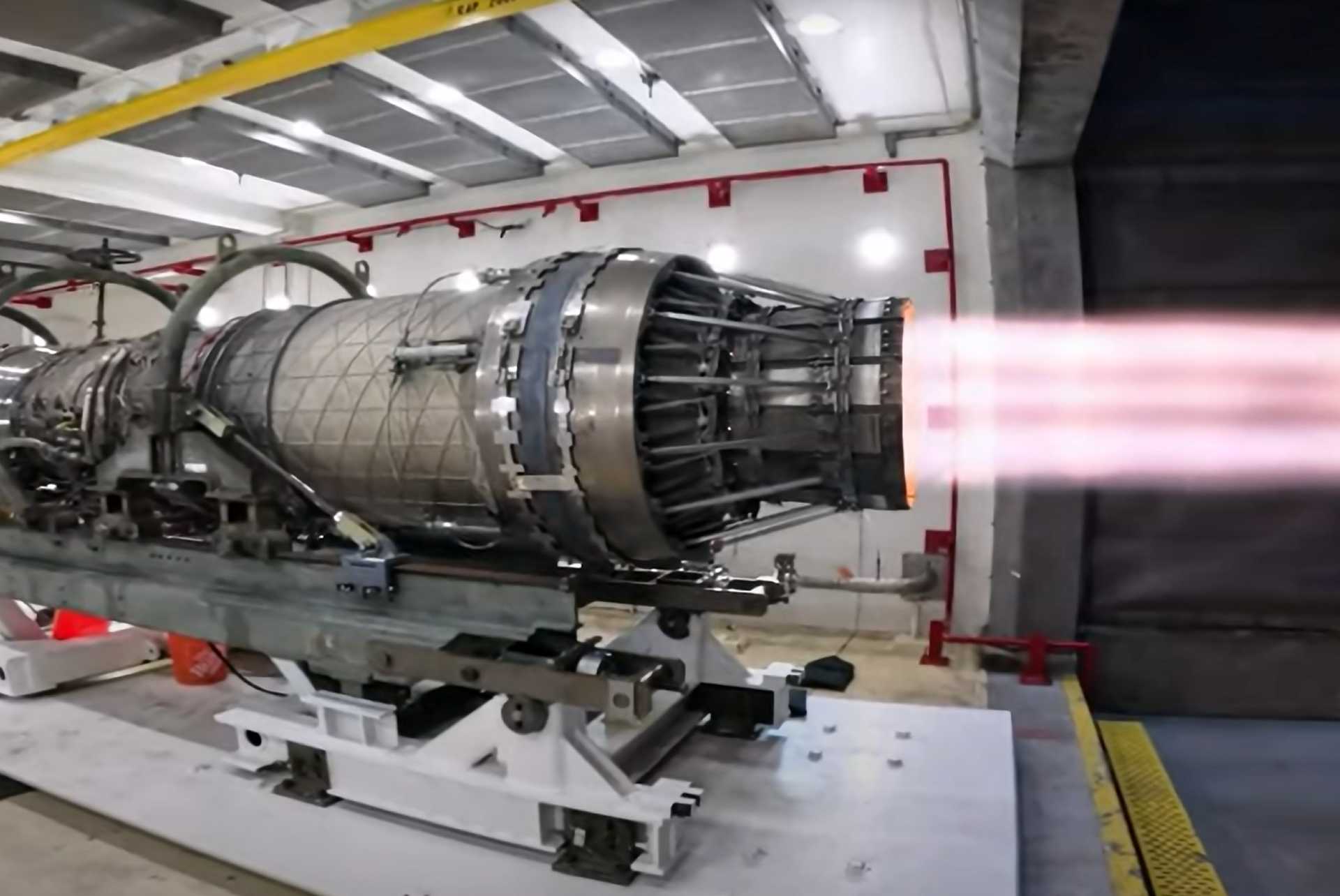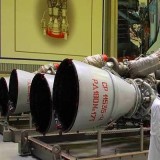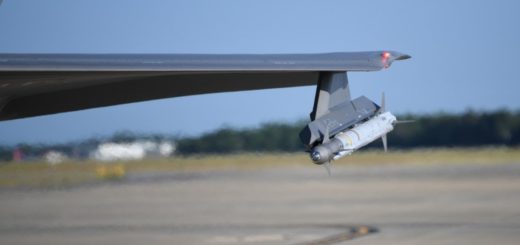US Company Hermeus Opens New Facility to Meet Surge in Demand for Hypersonic Aircraft Engine Testing

{loadposition bannertop}
{loadposition sidebarpub}
At the beginning of January 2025, American aerospace and defense company Hermeus unveiled its High Enthalpy Air-Breathing Test Facility (HEAT), marking a significant milestone in the development of supersonic and hypersonic military aircraft. This state-of-the-art testing infrastructure is designed to accelerate the testing and development of next-generation propulsion systems, setting the stage for breakthroughs in hypersonic aircraft by the end of the decade.Follow Army Recognition on Google News at this link
Hermeus HEAT Facility: A cutting-edge test center in Jacksonville, Florida, designed to accelerate the development of hypersonic aircraft engines. Hermeus’ HEAT facility enables efficient, cost-effective testing of high-speed propulsion systems, supporting the company’s goal to revolutionize aerospace with Mach 5-capable aircraft. (Picture source: Hermeus)
U.S. Company Hermeus, a leading player in high-speed aircraft technology, is best known for its ambitious goals in revolutionizing air travel and military aviation. With the launch of the HEAT facility, the company is addressing one of the major bottlenecks in hypersonic testing: limited access to suitable test infrastructure. In a statement, AJ Piplica, Co-Founder and CEO of Hermeus, highlighted that current hypersonic test facilities are booked up for over a year, with the cost of testing often being prohibitively expensive. HEAT aims to provide a cost-effective and efficient alternative that will alleviate these capacity limitations and serve as a critical resource for both commercial and military hypersonic testing.
The HEAT facility’s rapid development has been a notable achievement in itself. In just three months, Hermeus transformed an existing test infrastructure at Cecil Airport in Jacksonville, Florida, into a cutting-edge testing hub. The facility inherited test cells originally constructed in 1959 and a hush house from 1989. These legacy structures were extensively retrofitted to accommodate modern high-speed engine testing. The results speak for themselves: Hermeus managed to bring the facility online in one-eighth the time and at one-tenth the cost compared to typical engine test cell projects.
According to Alex Miller, Manager of Propulsion Test Engineering at Hermeus, the team engineered and installed custom systems such as fuel supply, air start systems, data acquisition and control systems, and the necessary mechanical and electrical interfaces to integrate the Pratt & Whitney F100 engine into the facility. This level of efficiency not only demonstrates Hermeus’ engineering prowess but also highlights the company’s ability to meet the stringent demands of modern defense and aerospace projects.
At the heart of the facility’s testing capabilities is the Pratt & Whitney F100 engine, which is currently undergoing tests at HEAT. The F100 will power Hermeus’ next-generation aircraft, the Quarterhorse Mk 2, which is designed to achieve speeds greater than Mach 2.5. When combined with Hermeus’ proprietary precooler engine technology, Quarterhorse Mk 2 will become the world’s first high-Mach autonomous aircraft, marking a critical step towards revolutionizing both commercial and military aviation.
In addition to testing the F100 engine, HEAT will be integral in developing Hermeus’ Chimera engine. The Chimera is a turbine-based combined cycle engine capable of reaching hypersonic speeds exceeding Mach 5. This cutting-edge propulsion system will power Hermeus’ Quarterhorse Mk 3, which is being developed to demonstrate turbine-to-ramjet mode transition in flight. If successful, the Mk 3 will break the air speed record currently held by the legendary SR-71 Blackbird, which is a major milestone in the pursuit of hypersonic aircraft.
HEAT’s capabilities go far beyond just accommodating legacy engines. The facility is designed to support the testing of high-performance engines under flight-like conditions, a crucial step in developing hypersonic aircraft. Hermeus has planned future phases of development for HEAT, including the integration of continuous high-Mach vitiated airflow to simulate extreme conditions that hypersonic vehicles will face in actual flight.
This ambitious development signals that Hermeus is not only focused on engineering cutting-edge propulsion systems but also on creating the infrastructure needed to test and validate these technologies efficiently and affordably. As the company continues to scale up its testing capabilities, it could play a pivotal role in shaping the future of both military defense systems and civil aviation.
Hermeus’ vision for the HEAT facility is to make it an essential resource for both military and commercial sectors, ultimately unlocking high-capability propulsion testing that can support hypersonic aircraft development. The company envisions HEAT as a critical national asset for hypersonic testing, offering an affordable and accessible alternative to the high-cost and overbooked testing infrastructure currently available. As hypersonic technology moves from conceptual to operational, facilities like HEAT will be crucial in enabling timely and cost-effective development of these advanced aircraft, which have immense potential for both defense and commercial applications.
The successful launch of HEAT also underscores Hermeus’ commitment to achieving ambitious goals in aerospace and defense. With plans to deliver hypersonic aircraft before the end of the decade, the company’s achievements could reshape the global aerospace landscape in the years to come.
Hermeus’ HEAT facility represents a major leap forward in the race to develop hypersonic aircraft and advanced propulsion systems. With its ability to provide low-cost, high-capacity testing for military and commercial engines, HEAT is poised to become an essential player in the global defense industry. As Hermeus continues to push the boundaries of flight technology, the HEAT facility stands as a testament to the company’s engineering excellence and visionary approach to the future of aviation.
This development, coupled with the impressive progress made on the Quarterhorse Mk 2 and Mk 3 aircraft, is sure to attract attention from military and aerospace leaders worldwide, shaping the future of high-speed flight for years to come.

{loadposition bannertop}
{loadposition sidebarpub}
At the beginning of January 2025, American aerospace and defense company Hermeus unveiled its High Enthalpy Air-Breathing Test Facility (HEAT), marking a significant milestone in the development of supersonic and hypersonic military aircraft. This state-of-the-art testing infrastructure is designed to accelerate the testing and development of next-generation propulsion systems, setting the stage for breakthroughs in hypersonic aircraft by the end of the decade.
Follow Army Recognition on Google News at this link
Hermeus HEAT Facility: A cutting-edge test center in Jacksonville, Florida, designed to accelerate the development of hypersonic aircraft engines. Hermeus’ HEAT facility enables efficient, cost-effective testing of high-speed propulsion systems, supporting the company’s goal to revolutionize aerospace with Mach 5-capable aircraft. (Picture source: Hermeus)
U.S. Company Hermeus, a leading player in high-speed aircraft technology, is best known for its ambitious goals in revolutionizing air travel and military aviation. With the launch of the HEAT facility, the company is addressing one of the major bottlenecks in hypersonic testing: limited access to suitable test infrastructure. In a statement, AJ Piplica, Co-Founder and CEO of Hermeus, highlighted that current hypersonic test facilities are booked up for over a year, with the cost of testing often being prohibitively expensive. HEAT aims to provide a cost-effective and efficient alternative that will alleviate these capacity limitations and serve as a critical resource for both commercial and military hypersonic testing.
The HEAT facility’s rapid development has been a notable achievement in itself. In just three months, Hermeus transformed an existing test infrastructure at Cecil Airport in Jacksonville, Florida, into a cutting-edge testing hub. The facility inherited test cells originally constructed in 1959 and a hush house from 1989. These legacy structures were extensively retrofitted to accommodate modern high-speed engine testing. The results speak for themselves: Hermeus managed to bring the facility online in one-eighth the time and at one-tenth the cost compared to typical engine test cell projects.
According to Alex Miller, Manager of Propulsion Test Engineering at Hermeus, the team engineered and installed custom systems such as fuel supply, air start systems, data acquisition and control systems, and the necessary mechanical and electrical interfaces to integrate the Pratt & Whitney F100 engine into the facility. This level of efficiency not only demonstrates Hermeus’ engineering prowess but also highlights the company’s ability to meet the stringent demands of modern defense and aerospace projects.
At the heart of the facility’s testing capabilities is the Pratt & Whitney F100 engine, which is currently undergoing tests at HEAT. The F100 will power Hermeus’ next-generation aircraft, the Quarterhorse Mk 2, which is designed to achieve speeds greater than Mach 2.5. When combined with Hermeus’ proprietary precooler engine technology, Quarterhorse Mk 2 will become the world’s first high-Mach autonomous aircraft, marking a critical step towards revolutionizing both commercial and military aviation.
In addition to testing the F100 engine, HEAT will be integral in developing Hermeus’ Chimera engine. The Chimera is a turbine-based combined cycle engine capable of reaching hypersonic speeds exceeding Mach 5. This cutting-edge propulsion system will power Hermeus’ Quarterhorse Mk 3, which is being developed to demonstrate turbine-to-ramjet mode transition in flight. If successful, the Mk 3 will break the air speed record currently held by the legendary SR-71 Blackbird, which is a major milestone in the pursuit of hypersonic aircraft.
HEAT’s capabilities go far beyond just accommodating legacy engines. The facility is designed to support the testing of high-performance engines under flight-like conditions, a crucial step in developing hypersonic aircraft. Hermeus has planned future phases of development for HEAT, including the integration of continuous high-Mach vitiated airflow to simulate extreme conditions that hypersonic vehicles will face in actual flight.
This ambitious development signals that Hermeus is not only focused on engineering cutting-edge propulsion systems but also on creating the infrastructure needed to test and validate these technologies efficiently and affordably. As the company continues to scale up its testing capabilities, it could play a pivotal role in shaping the future of both military defense systems and civil aviation.
Hermeus’ vision for the HEAT facility is to make it an essential resource for both military and commercial sectors, ultimately unlocking high-capability propulsion testing that can support hypersonic aircraft development. The company envisions HEAT as a critical national asset for hypersonic testing, offering an affordable and accessible alternative to the high-cost and overbooked testing infrastructure currently available. As hypersonic technology moves from conceptual to operational, facilities like HEAT will be crucial in enabling timely and cost-effective development of these advanced aircraft, which have immense potential for both defense and commercial applications.
The successful launch of HEAT also underscores Hermeus’ commitment to achieving ambitious goals in aerospace and defense. With plans to deliver hypersonic aircraft before the end of the decade, the company’s achievements could reshape the global aerospace landscape in the years to come.
Hermeus’ HEAT facility represents a major leap forward in the race to develop hypersonic aircraft and advanced propulsion systems. With its ability to provide low-cost, high-capacity testing for military and commercial engines, HEAT is poised to become an essential player in the global defense industry. As Hermeus continues to push the boundaries of flight technology, the HEAT facility stands as a testament to the company’s engineering excellence and visionary approach to the future of aviation.
This development, coupled with the impressive progress made on the Quarterhorse Mk 2 and Mk 3 aircraft, is sure to attract attention from military and aerospace leaders worldwide, shaping the future of high-speed flight for years to come.






